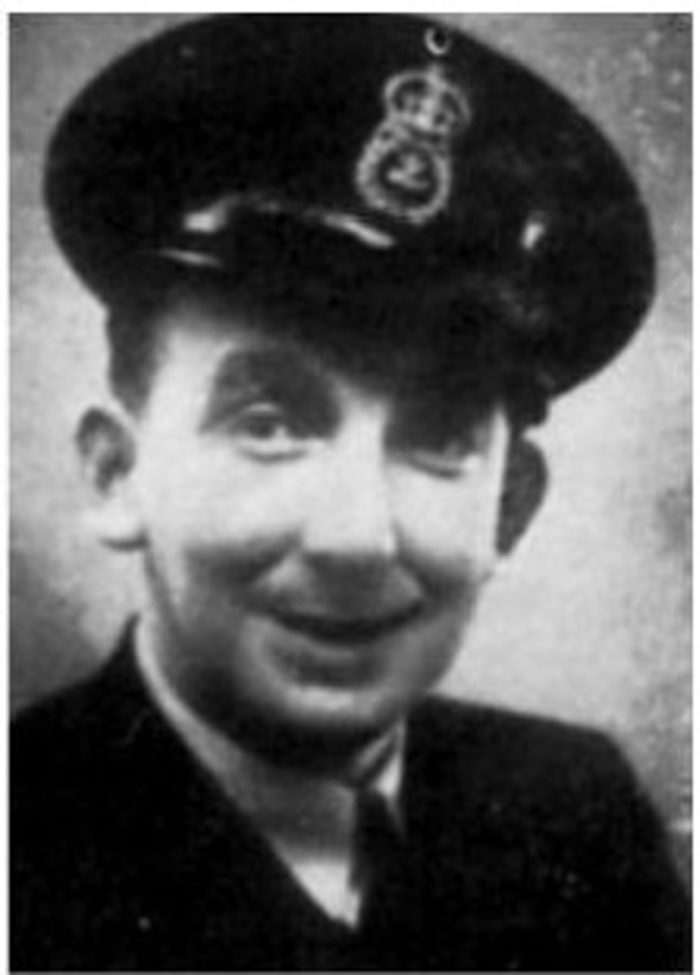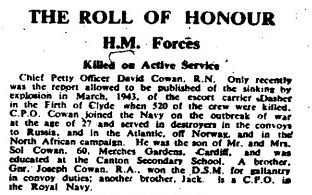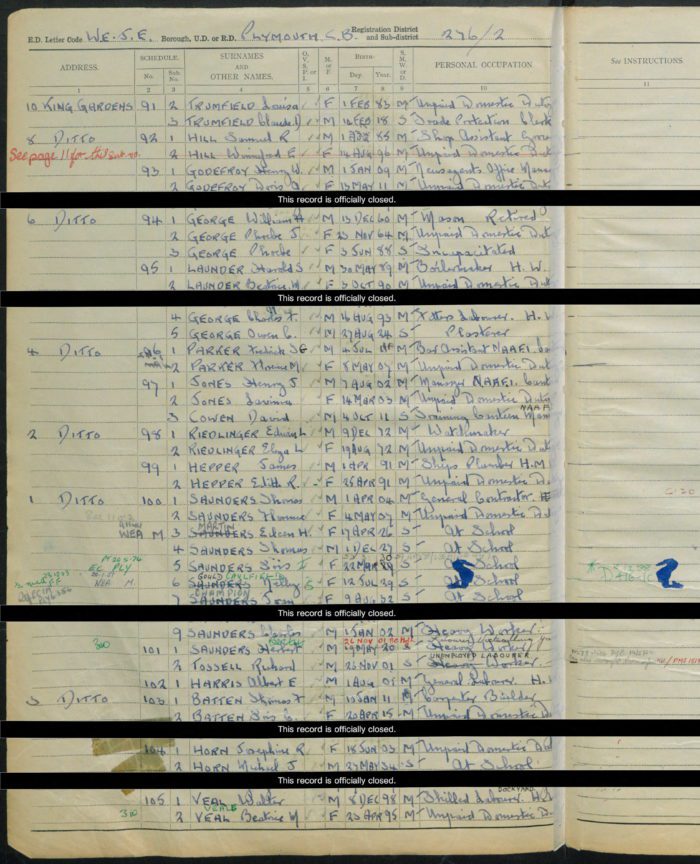David Cowen
Canteen Manager, Royal Naval Canteen Service
H.M.S. Dasher
Service number C/NX 2245
Died 27 Mar 1943
Commemorated on Chatham Naval Memorial
Age 31
David was born on 4 November 1911 in Cardiff, Wales to Lithuanian father Solomon, who changed the family surname from Lipsitz, and Russian mother Sarah nee Isaacs. David had eight siblings and their father worked as a drapery dealer. Two of his brothers served in the war, Joseph in the Navy and was awarded a D.S.M. and Jack who served as a Chief Petty Officer.
David enlisted at the outbreak of war and in 1939 was based in 4 Kings Gardens, Plymouth where he is listed as training as a canteen manager. He served in the conoys to Russia, the North African campaign and in the Atlantic off the coast of Norway.
On Saturday 27 March 1943, Dasher spent the day carrying out flying exercises with the aircraft of her two squadrons, 816 and 891 in preparation for a night torpedo strike against the German battle ship Tirpitz in Norway. At 4:40 pm, the ship’s recently appointed commanding officer, Captain Boswell, made an announcement over the ship’s tannoy system that flying for the day was completed and that shore leave would be granted on arrival back at Greenock. Shortly after this there was a tremendous explosion; with the ship’s two ton aircraft lift, flying 60 feet into the air before it fell into the sea behind the ship. Dasher lurched before settling by the stern as she began to take on water. The ship quickly lost head way as the engines had stopped, and all electrical power was lost, below decks bring plunged into darkness. The now exposed lift shaft was belching thick black smoke and flames.
Those men not part of the duty watch had already begun preparing for their return to port and the imminent run ashore, they were plunged into disorienting darkness were they stood. Those that could make tier way out of the ship began abandoning ship, jumping overboard from any point of exit they could reach as the fires in the hanger deck grew more intense and the ready use ammunition began to ‘cook off’.
The closest vessels to the scene of the disaster were H.M.S. Sir Galahad, four miles to the north and H.M.S. Isle of Sark, five miles to the south; both ships responded immediately in the knowledge that hundreds of men were swimming in the cold waters of the Clyde, many possibly injured. Other vessels were despatched from ports and harbours long the Clyde to assist. Two merchant vessels in the area at the time of the explosion deserve mention for their heroic rescue efforts, the S.S. Cragsman and the S.S. Lithium; both ships steamed into the heat and smoke, of the burning oil, the Cragsman emerged with fourteen survivors while the Lithium emerged from the dark poll of smoke with a total of sixty survivors! Others were hauled to safety by lifeboats from the Royal Navy ships which were soon at the scene, pulling men out of the water.
Burning fuel oil and aviation fuel had claimed the lives of many those in the water, hypothermia yet others; in all 379 men of the 528 men on board Dasher perished that evening. A History of H.M.S. DASHER (royalnavyresearcharchive.org.uk)



